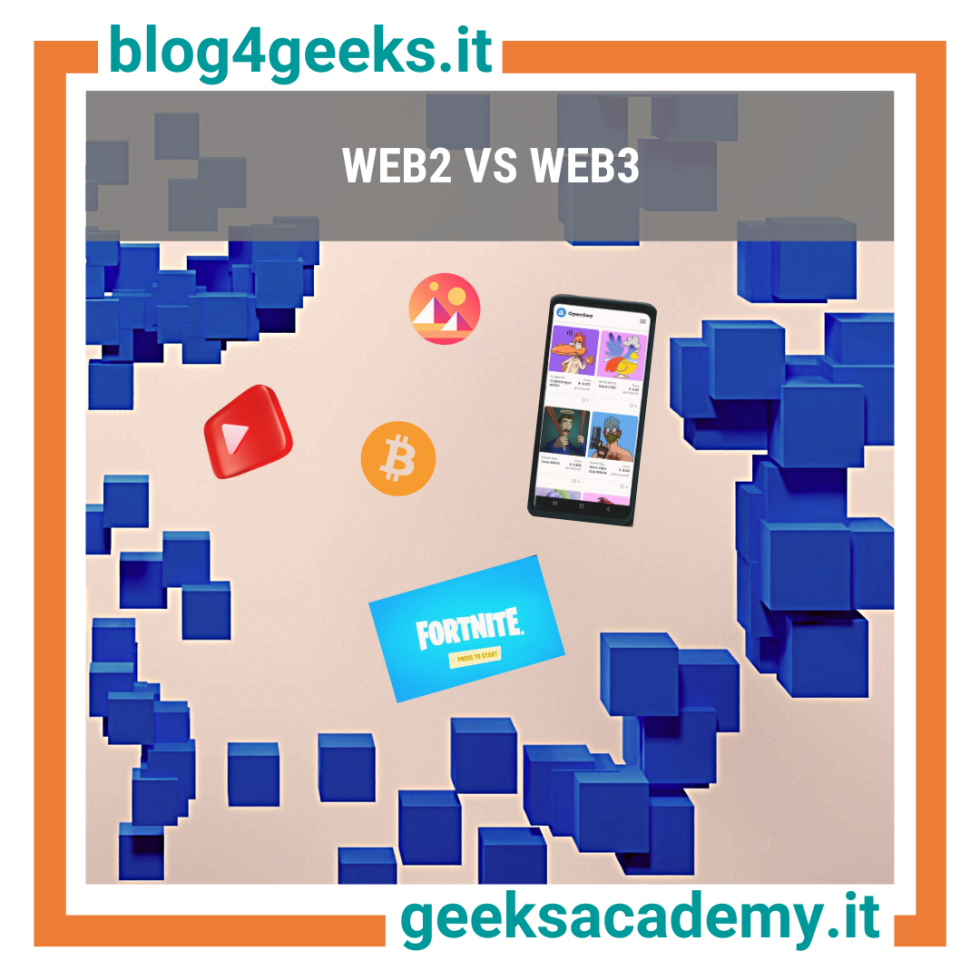
Discover Geeks Academy’s articles on: Blockchain, Coding, Cybersecurity, Cloud, Big Data, Artificial Intelligence, Gaming, Digital Innovation
Today we hear about the third era of the World Wide Web and how the Internet is changing. Although many Web3 elements already exist in the current state of Internet, the definitive transition from the old to the new iteration of the Web is still a long way off. It is a passage that will affect the daily use of the Internet and our conception of the Web. Let's take a step back and analyze its journey and what will be the potential future scenarios.
A brief history of the Web
From the birth of the Internet to Facebook launch, the use of the Web has changed over time. If the first version of the World Wide Web was an infrastructure that could be used and exploited by few, the rise of social media has changed the cards on the table. Long before the birth of Zuckerberg's company, the ability to create the first blogs and open an account on the popular MySpace allowed common users to create original content and publish it online. The Internet was no longer a prerogative of big brands and leading companies but for the first time the community could leave little footprints in the vastness of the network. Going forward, thanks to web services such as YouTube, publishing audiovisual content was finally possible for everyone in the digital world. Well before the birth of influencers, the Web was slowly veering towards an increasingly community-based network. Taking a small leap towards the present, we notice how the chance of populating the Internet with original content is no longer a novelty. However, there is an issue regarding the ownership of such contents. Today the multinationals leaders of the Web are basically controlling the web and, in fact, all our contents are in their hands. To better understand the concept of content ownership, let's move on to a specific field.

Gaming industry
The video game industry has dramatically changed. Video games are no longer ready-to-go and final products at the time of release: video games nowadays are like entities living multiple phases. In addition to the game release, the companies provide, even several months after the product's release, new additional content such as expansions, add-ons, new seasons. Additional content is usually optional but expands indeed the user's gaming experience. Among the various downloadable contents, franchises such as Fortnite, League of Legends or the recent Fall Guys offer the opportunity to purchase purely aesthetic elements, known as skins. Skins are nothing more than different outfits for our characters or digital avatars. Players who purchase skins get these elements within the game ecosystem of a specific company. For example, by purchasing a League of Legends skin, I can access my items via Riot Games servers. However, if one day the company were to go bankrupt or close its servers, what would happen to the contents I purchased? Forever lost. Not only would I permanently lose access to all contents but I would also lose the money invested in this project. This is where the Web’s third iteration comes into play.

NFTs & Metaverse
Thanks to blockchain technology, 2021 has been the year of NFTs and the metaverse. Projects like The Sandbox, Decentraland and Axie Infinity are among the first to evolve the concept of content ownership. Let's take the aforementioned example as a reference and try to turn it into a Web3 project. First of all, when I buy an NFT, I fully own that content and, if in the future I change my mind or simply don’t like it anymore, I can resell it. That additional content (the NFT) is a real investment since I own that specific digital asset. A breathtaking skin comes out and I don't want to use anymore the one I previously purchased? NFTs give users the opportunity to interact with one of the many NFT marketplaces and sell the old unused skin. And that’s just one of the advantages applicable in the Web3 environment. Some of the industry's leading companies have already entered into partnerships to make interoperable any content created within each ecosystem. This means that one day you will be able to buy a video game skin, move it and use it on a different video game. With a single purchase only, you can improve your gaming experience not for one game but on multiple services and platforms.
A digital evolution
The pandemic has dramatically speed up the development of new emerging technologies. Plus, thanks to the rebrand of Facebook in Meta, the push towards VR is the result of the digital transformation: jobs have been transitioning to platforms such as Zoom and Google Meet; the blockchain development and the adoption of cryptocurrencies are symptoms of the aforementioned digital transformation; the metaverse seems to be an imminent reality, not a mere futuristic concept. Furthermore, 87% of Generation Z has an average weekly playtime of around 7 hours.
Don't live the future as a sidekick... be a superhero! Discover Geeks Academy’s training offer in Gaming & Metaverse:
Sources:
https://www.oma3.org/post/a-new-consortium-dao-for-the-web3-metaverse